Quiet Zone Project
Construction Update (August 2024)
- All project work has been completed as of July 26, 2024
- Establishment of the Quiet Zone is scheduled for August 5th, 2024
- All railroad entities have been notified. All railroad entities will begin the process of notifying their operators and adding signage to the track areas, so that the train crews do not blow their horns as they pass through our crossings
- A Grand Opening Ceremony is planned for August 16th, 2024 at 10:00am at the 66th Street cul-de-sac
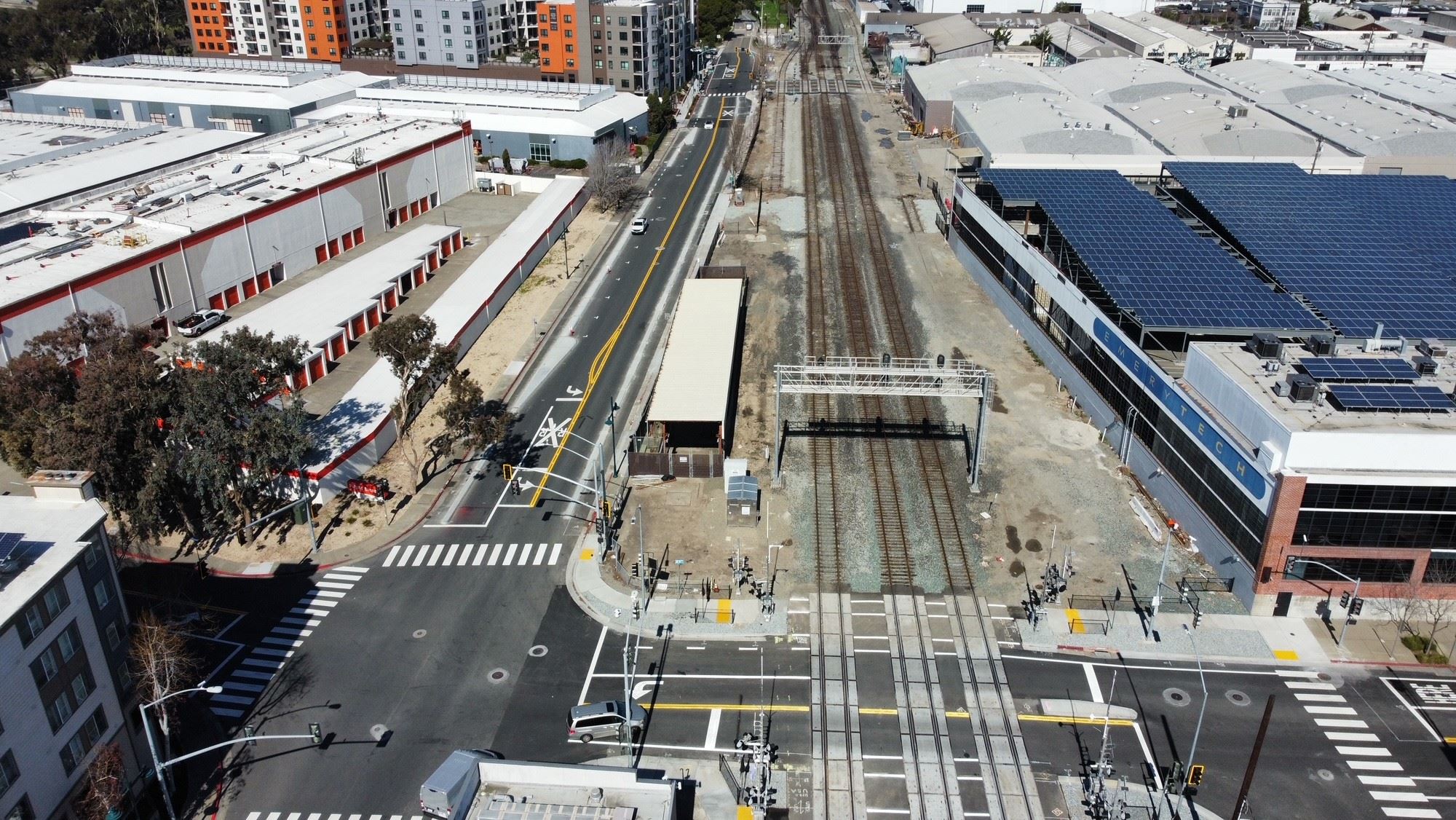
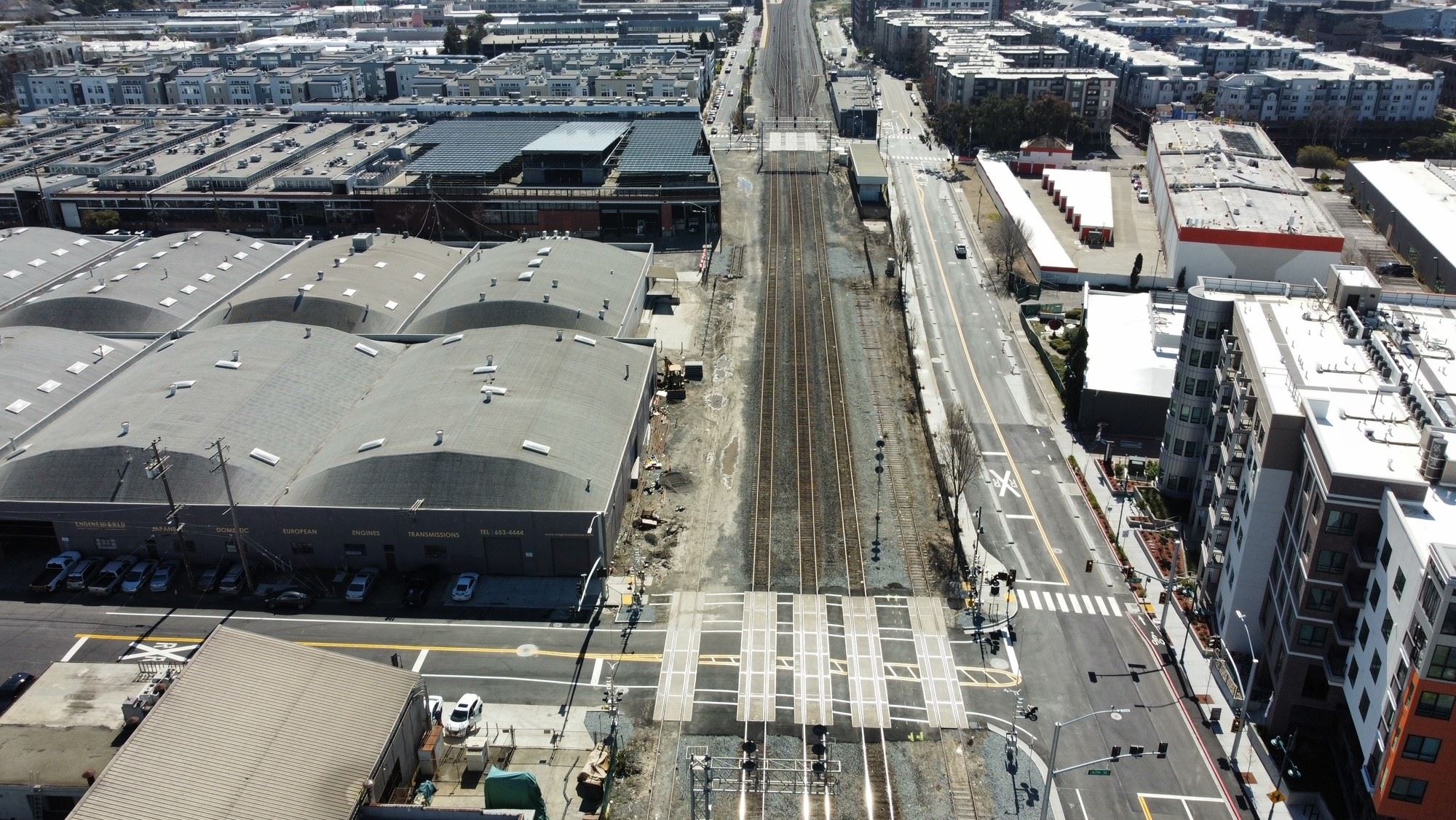
What is a Quiet Zone?
A Quiet Zone is a section of rail line at least one-half mile in length containing one or more consecutive public highway-rail grade crossings at which locomotive horns are not routinely sounded. Routine sounding can be silenced at specific highway-rail grade crossings after a safety system or procedure established by the appropriate traffic control authority is determined, by the Federal Railroad Administration (FRA), to be an effective substitute for the locomotive horn.
Why do we still hear trains in the Quiet Zone?
Quiet Zone does not mean you will never hear train horns. The name Quiet Zone means that train crews will not regularly blow the horn as a warning of the train’s approach to the crossings. There are numerous reasons you may occasionally hear a train horn at our crossings.
- Railroad or contract employees are working on or near the tracks
- The train crew may sound a warning to animals, vehicle operators, pedestrians, trespassers, crews on other trains
- Passenger train crews may sound their horn upon arrival at a station (Amtrak) to alert passengers standing too close to the platform
- Passenger trains may sound the horn to alert passengers of departure at the Amtrak Station
- The warning devices are out-of-service for repair, testing, or maintenance
- The crossing warning devices (lights, bells, and gates) are malfunctioning
- The engineer believes such action is appropriate in order to prevent imminent injury, death, or property damage
The Quiet Zone does not limit the use of locomotive bells that ring as the train goes through the crossing. These bells are an additional safety measure. Also, in a Quiet Zone, each public crossing must be equipped with functioning flashing lights, ringing bells, and gates that lower to temporarily close the road. Again, Federal law requires that these warning devices are working as intended.
Project Background
The Road Repair and Accountability Act of 2017 (“SB 1”), signed into law on April 28, 2017, established the Trade Corridor Enhancement Account to fund corridor-based freight projects nominated by local agencies and the state. Implementing legislation was enacted with the approval of SB 103 on July 21, 2017 which directs the California Transportation Commission (“CTC”) to allocate the Trade Corridor Enhancement Program (“TCEP”) funds and the federal National Highway Freight Program funds to infrastructure improvements along corridors that have a high volume of freight movement.
On December 19th, 2017, Emeryville’s City Council unanimously gave their verbal support to apply for 2018 SB 1 – TCEP funding with a project application for the Quiet Zone in Emeryville. Prior to this, the Emeryville Quiet Zone Project was a long-standing unfunded project in the City’s Capital Improvement Program. The Project scored very well in a highly competitive grant application process, bolstered with extra points in the scoring rubric by the support of 296 individual community members who signed onto a letter of support for this Project, as well as multiple businesses and homeowners associations who also wrote in support of the Project, representing thousands of Emeryville residents and workers.
On May 16, 2018, the CTC approved the 2018 Trade Corridor Enhancement Program Final Adopted Program of Projects. Included in this list of projects was the City’s $6.48 Million project, titled “Quiet Zone Safety Engineering Measures Project”.
Project Benefits and Scope
The Quiet Zone project addresses community identified needs by installing supplemental safety measures (SSM’s) and other physical barriers to restrict pedestrians, bicyclists, and automobiles from entering the train tracks at the wrong time. These safety measures will qualify the railroad corridor to be declared a “Quiet Zone”, thereby negating the need for trains to blow their horns.
Shellmound and 65th Street
Installation of new quad gates, sidewalk, median, and pedestrian gates.
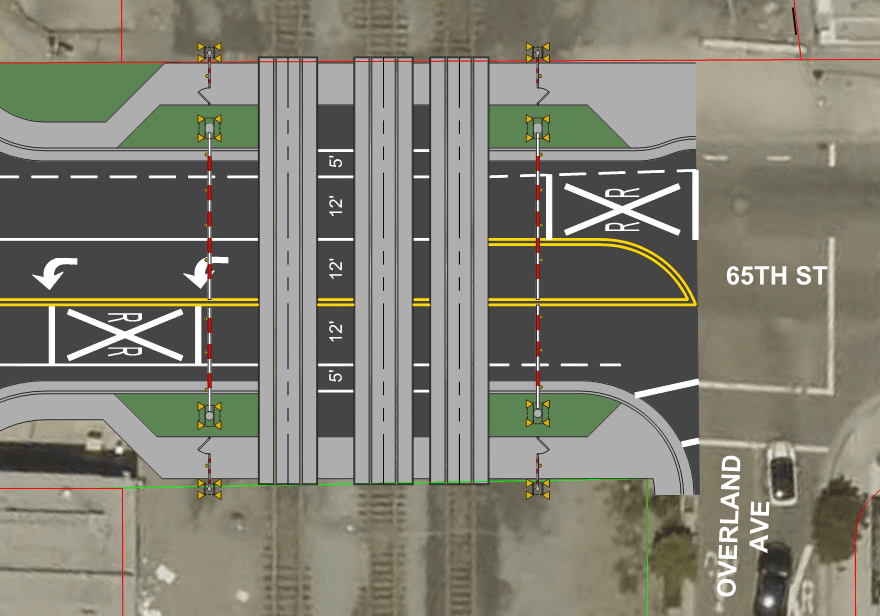
Shellmound and 66th Street
Full Closure of the crossing, and construction of a cul-de-sac on east side.
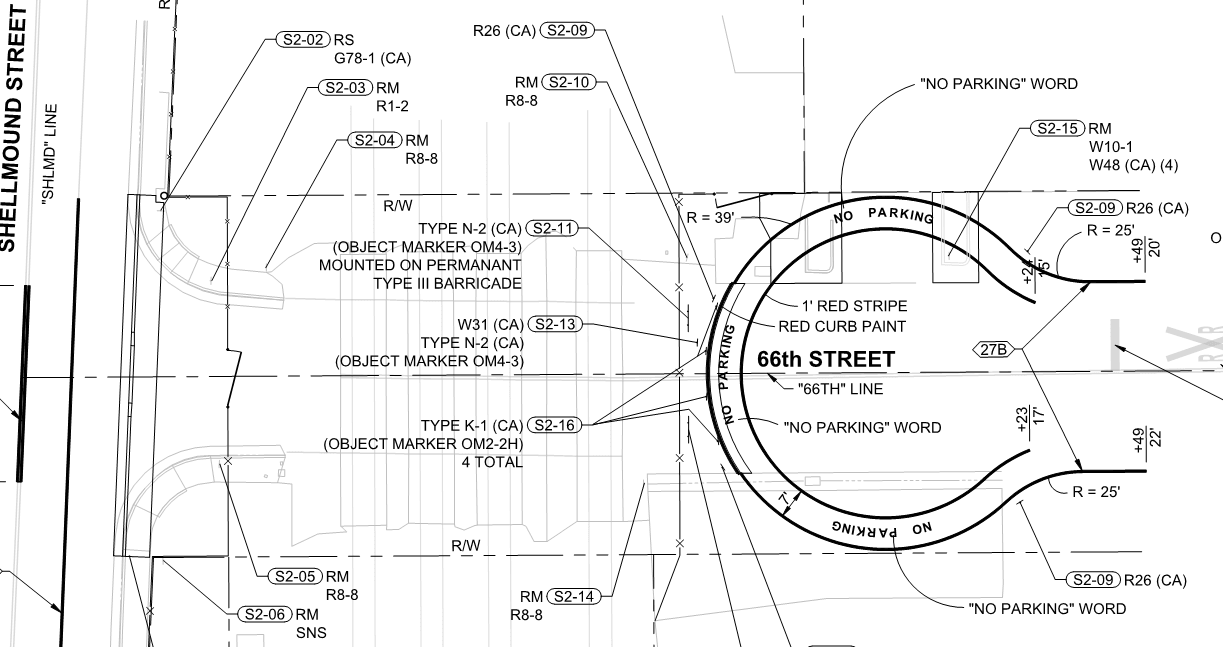
Shellmound and 67th Street
Installation of new traffic signal, quad gates, and pedestrian gates.
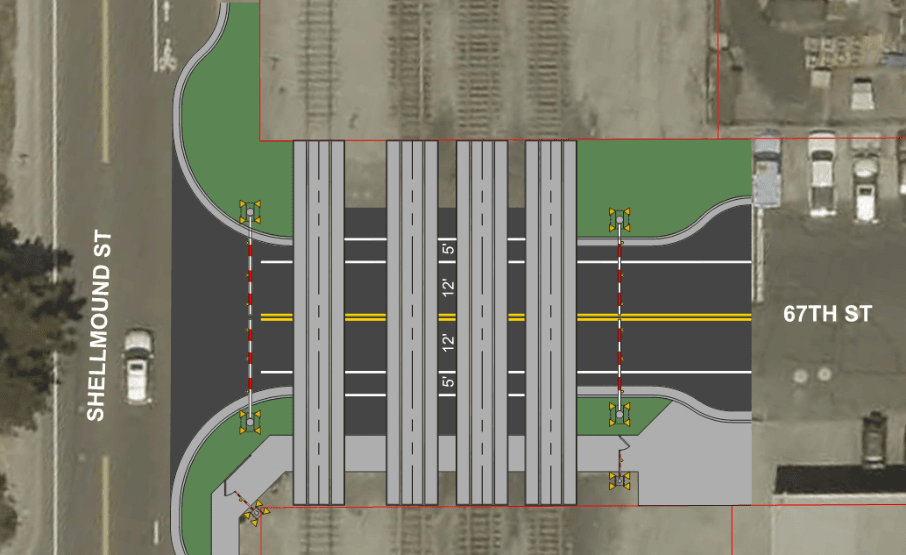
The safety engineering improvements are expected to significantly reduce the risk of rail-highway collisions at the project railroad crossings. The preliminary studies show that we will experience a 90% reduction in risk after the installation of the proposed safety improvements.
Project Costs
The Quiet Zone project addresses community identified needs by installing supplemental safety measures (SSM’s) and other physical barriers to restrict pedestrians, bicyclists, and automobiles from entering the train tracks at the wrong time. These safety measures qualifies the railroad corridor to be declared a “Quiet Zone”, thereby negating the need for trains to blow their horns.
$11.5M from a combination of the following:
- SB 1 “Gas Tax”
- Trade Corridor Enhancement Program (TCEP)
- ACTC
- Measure BB Funds
- CMA TIP Funds
- Local City Funds
Project Schedule
| Date |
Action |
| 2018 |
Funds Approved and Design Consultant Hired |
| 2019 |
Design Commenced, UPRR negotiations commenced |
| 2021 |
Design Scope Finalized, UPRR approves scope of work |
| Dec 2021 |
Design Finalizes, Project Advertised for Bids |
| Jan 2022 |
Bids Received, Bay Cities Paving & Grading apparent low bidder, Authorization |
| Spring 2022 |
Authorization to Construct |
| June 2022 |
Begin Construction |
| April 2024 |
Major Construction Completed, Notice of Quiet Zone Establishment |
| August 5th, 2024 |
Quiet Zone Establishment |
Thank you to the 296 individual residents (and to the thousands of other residents/workers represented by businesses and homeowner associations) that wrote letters in support of the project!
Gallery